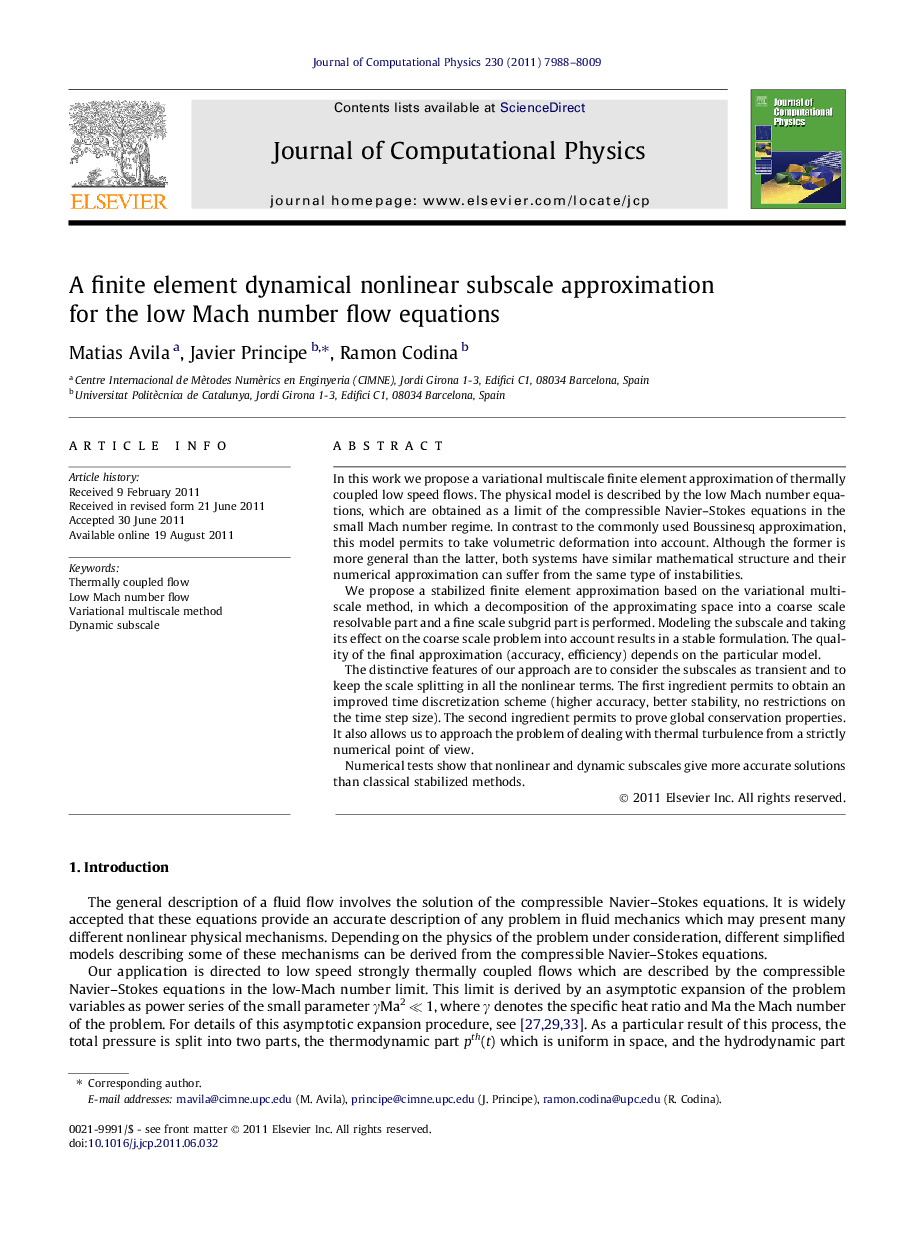| Article ID | Journal | Published Year | Pages | File Type |
|---|---|---|---|---|
| 519271 | Journal of Computational Physics | 2011 | 22 Pages |
In this work we propose a variational multiscale finite element approximation of thermally coupled low speed flows. The physical model is described by the low Mach number equations, which are obtained as a limit of the compressible Navier–Stokes equations in the small Mach number regime. In contrast to the commonly used Boussinesq approximation, this model permits to take volumetric deformation into account. Although the former is more general than the latter, both systems have similar mathematical structure and their numerical approximation can suffer from the same type of instabilities.We propose a stabilized finite element approximation based on the variational multiscale method, in which a decomposition of the approximating space into a coarse scale resolvable part and a fine scale subgrid part is performed. Modeling the subscale and taking its effect on the coarse scale problem into account results in a stable formulation. The quality of the final approximation (accuracy, efficiency) depends on the particular model.The distinctive features of our approach are to consider the subscales as transient and to keep the scale splitting in all the nonlinear terms. The first ingredient permits to obtain an improved time discretization scheme (higher accuracy, better stability, no restrictions on the time step size). The second ingredient permits to prove global conservation properties. It also allows us to approach the problem of dealing with thermal turbulence from a strictly numerical point of view.Numerical tests show that nonlinear and dynamic subscales give more accurate solutions than classical stabilized methods.
► We present a stabilized finite element approximation of the low Mach number equations. ► It is based on the variational multiscale method and the concept of dynamic subscales. ► A fully nonlinear model for the approximation of the subscales is introduced. ► Strategies for the solution of nonlinear coupled discrete problem are discussed. ► The high accuracy of the method is illustrated in practice.
